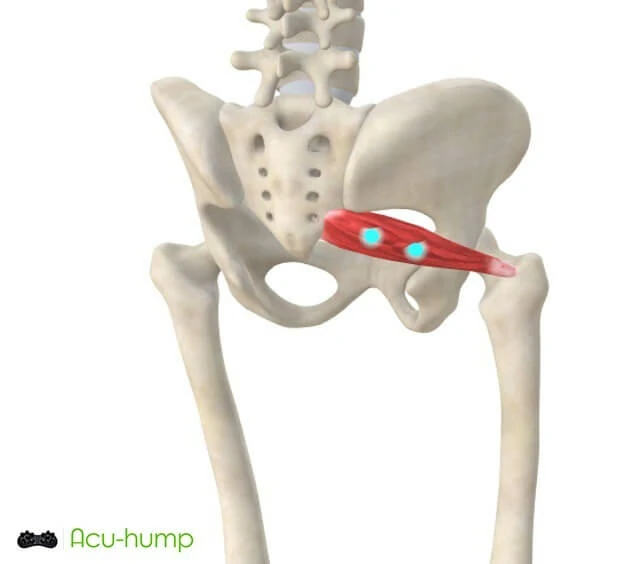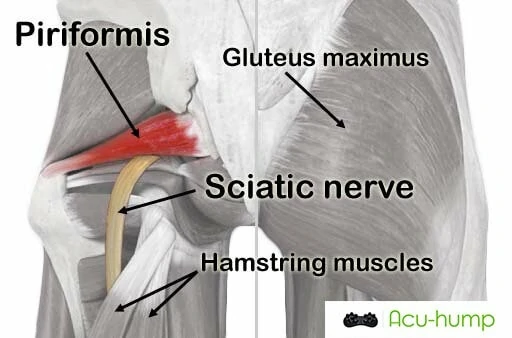Piriformis syndrome is a condition where the piriformis muscle compresses or irritates the sciatic nerve, causing buttock and leg pain. However, it is uncertain if piriformis syndrome also causes lower back pain. This article aims to explore the relationship between piriformis syndrome and lower back pain, shedding light on this topic while maintaining a scientifically rigorous approach.
Overview of the piriformis muscle
The piriformis muscle is a small but significant muscle located deep within the buttock region. Its primary function is to aid in hip rotation and stabilize the hip joint. Due to its proximity to the sciatic nerve, the piriformis muscle can have an impact on sciatica symptoms if it becomes compressed or irritated.

The link between piriformis syndrome and sciatica
The sciatic nerve runs below or sometimes through the piriformis muscle. When the piriformis muscle tightens or spasms, it can compress or irritate the sciatic nerve, leading to pain that radiates down the leg. This condition is commonly referred to as sciatica. However, the presence of sciatica pain caused by piriformis syndrome may overshadow any potential lower back pain that could also be associated with the condition.

What is referred pain
Referred pain refers to the phenomenon where pain is felt in an area that is different from its actual source. In the case of piriformis syndrome, muscle tightness or irritation can lead to referred pain, potentially affecting the lower back region. This means that despite the primary issue originating from the piriformis muscle, the pain may be felt in the back instead of the buttocks or legs.
Muscle imbalances and lower back pain
When the piriformis muscle tightens or becomes overactive due to piriformis syndrome, it can lead to a chain reaction of muscle imbalances in the surrounding area. The buttock muscles, including the gluteus maximus and medius, may also become tense as they try to compensate for the dysfunction of the piriformis muscle. This compensatory tension can extend to the muscles of the lower back, leading to muscle imbalances and potential lower back pain.
Muscle imbalances occur when certain muscles become overactive or tight while others become weak or underactive. In the case of piriformis-related lower back pain, the excessive tension in the piriformis and buttock muscles can contribute to the weakening and lengthening of the muscles in the lower back. This muscle imbalance can result in lower back pain, as the weakened muscles struggle to support the spine and maintain proper posture.

Research on lower back pain and piriformis syndrome
The piriformis muscle connects directly to the sacrum, the triangular bone located at the base of the spine. When experiencing piriformis-related lower back pain, individuals may report core instability, limited mobility, and tenderness in the lower back area. However, it is important to note that further research is needed to fully understand the extent and mechanisms of this relationship.
Differentiating piriformis-related lower back pain from other causes
Differentiating between lower back pain caused by piriformis syndrome and pain stemming from other sources can be challenging. However, some characteristics may help distinguish piriformis-related back pain. These include pain that worsens with prolonged sitting or activities involving hip movement and tenderness in the buttock region. It is crucial to seek professional medical evaluation to obtain an accurate diagnosis, as back pain can have various underlying causes that require different treatment approaches.
In conclusion, while piriformis syndrome is primarily associated with buttock and leg pain, the potential link between the condition and lower back pain should not be overlooked. The proximity of the piriformis muscle to the sciatic nerve and its connection to the sacrum suggest a possible relationship. However, thorough medical evaluation and diagnosis are crucial for accurately identifying the cause of lower back pain and determining whether piriformis involvement is contributing to the symptoms. Further research in this area is warranted to enhance our understanding and improve treatment options for individuals experiencing piriformis-related lower back pain.

Acu-hump®
Massage Butt & Back
